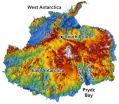(Press-News.org) In order to build and maintain cells, DNA is copied into ribonucleic acid (RNA) molecules, also called transcripts. Transcripts are often like a recipe for making proteins, and a collection of all the transcripts in a cell is called a transcriptome.
Pankaj Jaiswal, Assistant Professor of Botany and Plant Pathology at Oregon State University, Samuel Fox, a Postdoctoral Associate in Jaiswal's laboratory, and colleagues assembled transcriptomes of a noxious weed, Brachypodium sylvaticum, or slender false brome. The transcriptome provides an extensive genetic tool for studying how invasive species, like slender false brome, successfully spread into novel ranges. In addition, the genome is available for a closely related species, Brachypodium distachyon. Together, the transcriptome and genome can be used as a reference for pinpointing differences in slender false brome genes and gene activity that may contribute to its invasive capabilities.
Slender false brome is an invasive grass that is native to Europe, Asia, and North Africa. It was introduced into the United States about 100 years ago and is listed as a noxious weed along the West Coast of the United States. "It is aggressively invasive within its current range—near monocultures of this grass occupy thousands of hectares of mixed coniferous understory and grassland habitats in Oregon," says Mitch Cruzan, coauthor and Associate Professor of Biology at Portland State University.
Slender false brome is ideal as a model for invasive plant evolution. "False brome is in the process of active range expansion and is wildly successful despite experiencing colder, wet winters and drier summers than plants in the native range," explains Cruzan, "so it is a great system for studying ecological and evolutionary aspects of invasion."
Fox and colleagues have assembled the transcriptomes for two slender false brome populations from its native range (Greece, Spain) and one population from its invasive range (Oregon). Comparing transcriptomes across ranges will reveal new changes in gene expression in the highly successful invasive population. "This system has great potential as a comparative framework for studying adaptation to new environments and invasion," comments Jaiswal.
To allow future studies to identify the functions of slender false brome genes, the authors also compared the false brome transcriptome to those of well-studied agricultural species, including rice and sorghum. If false brome possesses a gene that has already been studied in an agricultural species, it will be easier to identify the gene's supposed function. The teams from Jaiswal's and Cruzan's laboratories are exploring these newly developed genetic resources, which may provide insights into how slender false brome has adapted to Oregon's different environmental conditions.
The authors published their results, including details on data retrieval, in the March issue of Applications in Plant Sciences (available for free viewing at http://www.bioone.org/doi/pdf/10.3732/apps.1200011). Fox and Cruzan note, "The seed and genomic resources are publicly available, so it would be relatively easy for any research group to establish a research program focused on slender false brome."
INFORMATION:Applications in Plant Sciences (APPS) is a monthly, online-only, peer-reviewed, open access journal focusing on new tools, technologies, and protocols in all areas of the plant sciences. It is published by the Botanical Society of America (http://www.botany.org), a non-profit membership society with a mission to promote botany, the field of basic science dealing with the study and inquiry into the form, function, development, diversity, reproduction, evolution, and uses of plants and their interactions within the biosphere. The first issue of APPS published in January 2013; APPS is available as part of BioOne's Open Access collection (http://www.bioone.org/loi/apps).
For further information, please contact the APPS staff at apps@botany.org.
END
Antarctica's topography began changing from flat to fjord-filled starting about 34 million years ago, according to a new report from a University of Arizona-led team of geoscientists.
Knowing when Antarctica's topography started shifting from a flat landscape to one with glaciers, fjords and mountains is important for modeling how the Antarctic ice sheet affects global climate and sea-level rise.
Although radar surveys have revealed a rugged alpine landscape under Antarctica's two-mile-thick ice sheet, the surveys tell nothing about when the continent's deep valleys ...
Washington, D.C.—New theoretical modeling by Carnegie's Alan Boss provides clues to how the gas giant planets in our solar system—Jupiter and Saturn—might have formed and evolved. His work was published recently by the Astrophysical Journal.
New stars are surrounded by rotating gas disks during the early stages of their lives. Gas giant planets are thought to form in the presence of these disks.
Observations of young stars that still have these gas disks demonstrate that sun-like stars undergo periodic outbursts, lasting about 100 years, which transfer mass from the ...
Men with low-risk prostate cancer who previously had to choose between aggressive treatment, with the potential for significant side effects, and active surveillance, with the risk of disease progression, may have a new option. Focal laser ablation uses precisely targeted heat, delivered through a small insertion and guided into the prostate by magnetic resonance imaging, to burn away cancerous cells in the prostate.
A small, phase 1 trial, to published early online in the journal Radiology, found that this approach, designed to treat just the diseased portion of the ...
Isolation of DNA from some organisms is a routine procedure. For example, you can buy a kit at your local pharmacy or grocery store that allows you to swab the inside of your cheek and send the sample for DNA sequencing. However, for other organisms, DNA extraction is much more problematic. Researchers at Desert Botanical Garden in Phoenix, Arizona, have developed a novel procedure that greatly simplifies genomic DNA isolation from cactus tissue.
For members of the family Cactaceae, isolation of genetic material can be difficult due to the presence of polysaccharide-based ...
(Philadelphia, PA) – Some 5.8 million Americans suffer from heart failure, a currently incurable disease. But scientists at Temple University School of Medicine's (TUSM) Center for Translational Medicine have discovered a key biochemical step underlying the condition that could aid the development of new drugs to treat and possibly prevent it.
"Drugs we currently use for heart failure are not very effective," explained lead investigator Walter J. Koch, PhD, Professor and Chairman of the Department of Pharmacology at TUSM, and Director of the Center for Translational Medicine ...
PHILADELPHIA — A series of microRNA expression signatures that may help to define progression of the precancerous condition Barrett's esophagus into esophageal adenocarcinoma was reported recently in Cancer Prevention Research, a journal of the American Association for Cancer Research.
"Once a rare cancer representing only 5 percent of all esophageal cancers in the United States, esophageal adenocarcinoma is the cancer with the fastest-rising incidence — six-fold increase in the past three decades — and currently comprises more than 80 percent of all new esophageal cancer ...
PHILADELPHIA — Visceral fat, or fat stored deep in the abdominal cavity, is directly linked to an increased risk for colon cancer, according to data from a mouse study published in Cancer Prevention Research, a journal of the American Association for Cancer Research.
"There has been some skepticism as to whether obesity per se is a bona fide cancer risk factor, rather than the habits that fuel it, including a poor diet and a sedentary lifestyle," said Derek M. Huffman, Ph.D., postdoctoral fellow at the Institute for Aging Research at the Albert Einstein College of Medicine ...
These days the core of the Milky Way galaxy is a pretty tame place...cosmically speaking. The galactic black hole at the center is a sleeping giant. Existing stars are peacefully circling. Although conditions are favorable, there doesn't even seem to be much new star formation going on.
But there is growing evidence that several million years ago the galactic center was the site of all manner of celestial fireworks. A pair of assistant professors – Kelly Holley-Bockelmann at Vanderbilt and Tamara Bogdanović at Georgia Institute of Technology – have come up with an ...
Protect your finances when you go through a divorce
Article provided by Joseph Indelicato, Jr., P.C.
Visit us at http://www.indelicato.com/
Financial and marital problems can be difficult to deal with, especially when you are facing both of these issues at the same time. During a divorce, many people deal with a great deal of stress that can sometimes lead to poor decision-making. The following tips can help you deal with money matters as you split from your spouse, and help ensure that your finances will be in order post-divorce.
Financially protecting your ...
Creating successful non-compete agreements
Article provided by The Stevenson Law Firm, PC
Visit us at http://www.texashealthlawattorney.com
Creating successful non-compete agreements
In today's competitive market, many companies -- Fortune 500s, sole proprietors, nonprofits and more -- are taking whatever measures they can to protect the secrets of their business practices and prevent the loss of dedicated customers. If employers need to protect trade secrets, they may require employees to sign a non-compete agreement.
Non-compete agreements can be helpful ...

